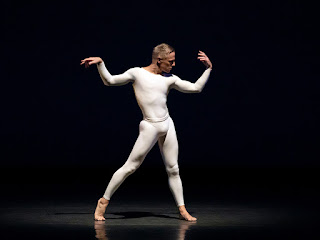
CHE MALAMBO February 14, 2020 Che Malambo captured the Joyce Theatre’s audience from the moment the cast of 12 dancers appeared through the dark stage against a bright backlight with a crescendo of zapateo - Argentinean rhythmic footwork - culminating in a roaring shout. Choreographed and staged with rampant showbiz and savoir-faire, Gilles Brinas catered an array of traditional Argentinean dances set in an austere contemporary framework. For the entire performance, the dancers wore a single outfit compose of neutral black sleeveless shirts, plain black pants and Malambo boots. The evening started with a variation of the widely known Malambo Norteño, characterized by its brisk zapateo characterized by fast shuffles, hip twists, inverted leg whips, kicks, heel scuffs, toe accents, all embellished by its steady elegantly proud stance. A vibrant feast of bombo legueros followed with the cast showcasing their drumming mastery. Commendable was the soloist that introduced Malambo sureñ...

